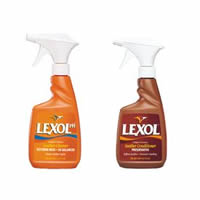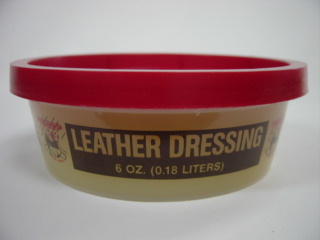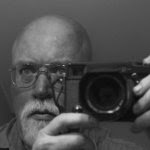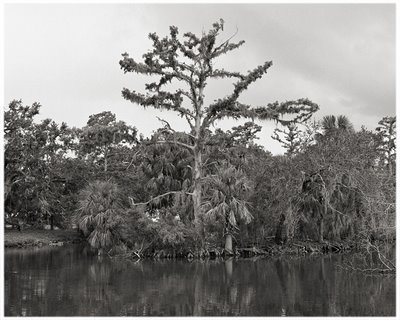I don’t think of myself as a camera fondler although others may beg to differ. I prefer to think if it as taking care of my investment so it will last as long as I do, much like a Marine takes care of his M16. I have about 10 cameras that are at least 50 years old. When I get a vintage camera, I trust an expert technician to keep the insides running perfectly. For lenses, I use John Van Stelten at
Focal Point. For Leicas, I use Don Goldberg at
DAG or
Ken Ruth at
Bald Mountain . For Rolleiflexes, the man is
Harry Fleenor at Oceanside Camera Repair. All of these master technicians are backlogged with work, and it isn’t unusual to have your camera in their care for months instead of weeks. For Leica repair, I have also heard very good reports about
Sherry Krauter.
The exteriors of the cameras are a different matter. You can get your vintage rangefinder painted by a Japanese fellow named Shintaro. I try not to buy cameras or lenses classified as “Bargain” or “Ugly” (the very frank descriptors used by KEH Camera Brokers). Instead, I try to find a camera that looks just used enough to not appeal to collectors. I don’t care if it has its original box or lens cap. It just has to be functional and not obviously abused.
I have picked up four used Rolleiflexes over the past few years, the result of a lot of low-balling on Ebay and sometimes getting lucky. Twin lens reflexes have a lot more surface area on them than do rangefinders, and cleaning up their outsides is a bit more of a chore. I have to admit that I didn’t know the first thing about restoring the external leather of a Rolleiflex TLR, so I relied on the collective wisdom of the Rollei Users Group (or RUG), an international forum dedicated to Rolleiflex photography. When I posed the question of how to get the leather on the TLR looking new, I got a variety of answers and finally settled on two different leather care products.

The first product suggested was a cleaner called Lexol. I had never seen the stuff in the store and it took some looking to locate a bottle of it (in Pep Boys, an automotive supplies store).
I wanted not only to clean the leather but also to restore it to its original black, gleaming state. One important consideration was to avoid all use of petroleum products as they are apparently a bit harsh on 50-year-old leather. I also wanted to avoid any sort of solvent that might unglue the thin leather from the metal. I lucked out. Jeff Kelley, one of the RUG members, recommended some leather treatment products designed for antique leather. The company, Pecard Leather Care, had a nice kit especially for antique leather at a reasonable price (with enough actual material for many Rolleiflexes). I ordered the kit, and it arrived in a few days ago. One of the kit's components is a large plastic tub of “leather dressing”, a greasy-feeling paste that looks like petroleum jelly but feels more like butch wax. Also in the kit are two flat tins of weatherproof dressing, one brown and one black. Perfect, in that my Rolleiflex FX 2.8 is brown and everything else I have is black. The tins look like shoe polish cans, but the stuff inside is much, much softer and somewhat translucent. I cannot think of a way to describe it other than “goop”. Not viscous enough to be slime, it is more like the lemon part of lemon meringue pie.
Using the Lexol and Pecard products can be a bit messy. I first cleaned the leather with cotton swabs dabbed in a 35mm film canister half-filled with Lexol. I bought the Lexol enriched with pH-balanced glycerol. Glycerol is a thick alcohol that very hydroscopic, i.e., it attracts water from the air. The Lexol is clear and a bit thick despite being in a spray bottle. I dabbed it on the leather with cotton swabs and let it set for about 10 minutes. I then removed it (and a lot of yellowish-brown grime) with cotton cosmetic pads.

The next step was the Pecard Leather Dressing. It is pretty hard to apply the greasy leather dressing to the camera without getting it all over the metal parts unless you decide to work in many small areas, one at a time. I chose to get it over with in a hurry and slathered a coating of the stuff all over the leather, getting it on the edges of the metal, my hands, and two terrycloth towels. The instructions suggest leaving it on for several days to let the dressing be absorbed. I didn’t want kid glove leather on the camera, so I let it set for an hour. Getting the leather dressing off of the camera was a little like competing in a greased pig contest. Eventually, I went over the entire camera with several clean terrycloth towels until nothing felt greasy (on the camera or me).
The following day, I applied the black weatherproof dressing. I was a bit less aggressive here, applying it slowly and methodically with cotton swabs. I let it sit for an hour, and then gently rubbed it off with clean terrycloth towels.
I have to say that the results were very nice, better than my old standard of Kiwi shoe polish. The luster left by the Pecard products is semi-glossy, leaving the leather with a very black matte appearance.
The Pecard Antique Leather Care Kit looks like just the right ticket to keeping your vintage Rolleiflex or Rolleicord looking new. That it comes with both brown and black leather weatherproof dressing is fortuitous. You can protect the leather on black and brown cameras as well as the brown cases and straps. The kit costs a mere $15 and should be enough to last you for years.
 I have found Domke protective wraps to be an effective way to protect cameras, lenses, meters, and anything else you want to give a bit of padding and resistance to scuffs. They remind me a little of very small versions of the pads used by movers to protect furniture. They are square with soft fabric outside and nylon inside. Each inside corner has Velcro™ on it, which sticks tenaciously to the soft fabric outside. Covering a camera or lens is a bit like diapering a baby (or making one of many different food items with a flour tortilla at Taco Bell™). One Domke Wrap didn’t seem like quite enough padding to me, so I double-wrapped the Rolleiflex with two.
I have found Domke protective wraps to be an effective way to protect cameras, lenses, meters, and anything else you want to give a bit of padding and resistance to scuffs. They remind me a little of very small versions of the pads used by movers to protect furniture. They are square with soft fabric outside and nylon inside. Each inside corner has Velcro™ on it, which sticks tenaciously to the soft fabric outside. Covering a camera or lens is a bit like diapering a baby (or making one of many different food items with a flour tortilla at Taco Bell™). One Domke Wrap didn’t seem like quite enough padding to me, so I double-wrapped the Rolleiflex with two.












